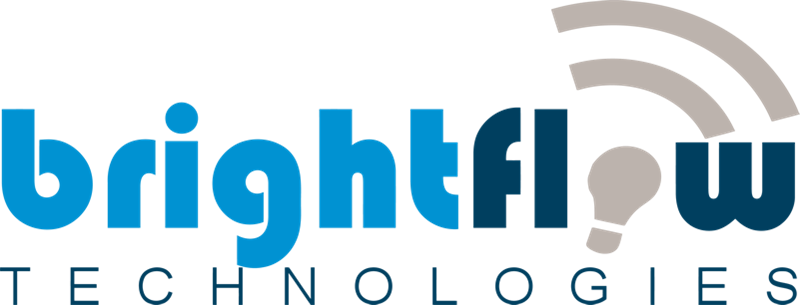“It’ll never happen to us.”
That’s the mindset that leaves businesses vulnerable to cyberattacks. Maybe you think cybercriminals only target big corporations with deep pockets, or that your business flies under the radar.
The reality is much different. Cyberattacks don’t discriminate. They can happen to any business, in any industry, at any time. In fact, the businesses that think they’re safe are often the most attractive targets because they typically have fewer security resources and defenses in place.
At BrightFlow, we’re not here to scare you with doom-and-gloom scenarios. We believe in keeping Charlotte businesses informed so you can stay protected. Our goal is to be your trusted cybersecurity partner, helping you understand the real threats out there and how to defend against them.
The first step in building strong cybersecurity is recognizing that every business – including yours – is a potential target.
This article covers the five biggest cybersecurity risks that Charlotte businesses face today and how to avoid them.
1. Phishing Attacks
Phishing isn’t what it used to be. Thanks to AI, cybercriminals are now crafting incredibly convincing, personalized attacks that can fool even security-conscious employees. Modern phishing campaigns use:
- Hyper-personalized messages that reference your business, industry, or recent news
- Deepfake audio and video that can impersonate executives or trusted partners
- Spear-phishing techniques that target specific employees with information gathered from social media
The scary reality? Most employees still can’t reliably identify these sophisticated attacks, and human error remains the #1 cause of security incidents. When an employee clicks that malicious link or downloads that infected attachment, attackers get a foothold in your network.
How to Protect Against Phishing
The best way to fight phishing is to turn your employees into your first line of defense. Run regular training sessions that show real examples of phishing attempts, and don’t just lecture. Make it interactive. Everyone wants the chance to be the hero.
Send fake phishing emails to test how your team responds, but here’s the key: when someone clicks a suspicious link, don’t shame them. Use it as a teaching moment. Create a culture where people feel safe reporting weird emails instead of worrying they’ll get in trouble for admitting they almost fell for something.
On the tech side, invest in smart email security tools that can catch the sophisticated stuff before it hits your inbox. These systems use AI to spot patterns that humans might miss. And please, set up multi-factor authentication on everything important. Yes, it’s a minor hassle, but it means that even if someone’s password gets stolen, the bad guys still can’t get in. Make it super easy for employees to report suspicious emails and respond ASAP when they do.
2. Malware and Ransomware Attacks
A ransomware attack isn’t just about paying the ransom, though that alone can be financially devastating. The real cost comes from:
- Extended downtime while systems are offline
- Lost productivity as employees can’t access critical systems
- Data recovery expenses to rebuild compromised information
- Reputational damage that drives customers away
Without the robust cybersecurity infrastructure of Fortune 500 companies, medium-sized Charlotte businesses are seen as easier, more profitable targets. Even a “small” attack can shut down operations for days or weeks, which many businesses simply can’t survive.
How to Protect Against Malware and Ransomware
Stay on top of your updates. We know, we know – those software update notifications are annoying, but they’re patching security holes that hackers love to exploit. Set up automatic updates where possible, and make sure someone’s responsible for keeping everything current. Get good endpoint protection that watches for suspicious behavior, not just known threats.
And here’s a big one: don’t give everyone access to everything. If someone in accounting doesn’t need access to your customer database, don’t give it to them. It’s not personal. It’s just smart security.
Your backup strategy is what will save you when everything else fails. Follow the 3-2-1 rule: keep three copies of important stuff, on two different types of storage, with one copy somewhere else entirely. But don’t forget to actually test your backups regularly. Nothing’s worse than thinking you’re protected only to find out your backups don’t work when you need them. Consider cloud backups that can’t be encrypted by ransomware, and keep some backups completely offline.
3. Insider Threats
Your biggest security risk might be sitting right down the hall. Insider threats come in several forms:
- Malicious insiders like disgruntled employees who intentionally cause harm
- Negligent employees who accidentally compromise security by clicking bad links or losing devices
- Compromised credentials where legitimate employee accounts are hijacked by external attackers
The challenge is that these threats come from people who already have legitimate access to your systems. They know where the valuable data lives and how to get to it. Even worse, many insider threats go undetected for months because the activity looks normal from the outside.
How to Protect Against Insider Threats
Keep an eye on who has access to what, and regularly clean house. People change roles, leave the company or just don’t need access to certain things anymore. Set up systems that flag unusual behavior, like someone downloading way more files than normal or logging in at 3 AM when they usually work 9-to-5. Don’t be paranoid, but be aware. Create clear policies about what’s okay and what’s not, and make sure everyone knows where the lines are.
You want to build trust while staying secure. Do proper background checks for sensitive positions, and have a solid process for when people leave – their access should be gone before they walk out the door. Encourage people to speak up if they see something fishy, and consider having an anonymous way to report concerns. Regular security training helps everyone understand that they’re part of keeping the company safe.
When people feel included in security rather than policed by it, they’re more likely to be part of the solution.
4. Weak Passwords and Access Control Issues
Password problems plague businesses of all sizes, but they’re especially dangerous for smaller companies with limited IT oversight. Common issues include:
- Shared passwords among managers or team members
- Weak, easily-guessed passwords that can be cracked in minutes
- Password reuse across multiple critical systems
- Excessive access privileges where employees can reach data they don’t need for their job
When everyone has access to everything “just in case,” you’re violating the principle of least privilege – a fundamental security concept that limits access to only what each person needs to do their job. This oversharing creates unnecessary risk and makes it harder to track down problems when they occur.
How to Protect Against Password and Access Control Problems
Get a business password manager and make everyone use it. These tools create strong, unique passwords for everything and remember them so your employees don’t have to. No more sticky notes with passwords, no more using “Password123” for everything.
Set up multi-factor authentication everywhere you can, especially on anything containing sensitive data. It takes an extra few seconds, but it makes your accounts exponentially harder to crack. Stop sharing passwords between team members. Give everyone their own login credentials, even for shared systems.
Review who has access to what at least twice a year. You’d be surprised how many former employees still have active accounts months after they left. Set up single sign-on so people can access multiple systems with one secure login instead of juggling dozens of passwords. Use dark web monitoring to get alerts if any of your business passwords show up in data breaches – it happens more often than you’d think. Create simple procedures for requesting access changes and keep records of who approved what and when.
5. IoT Vulnerabilities
Your smart thermostat, security cameras, and connected printers are convenient, sure, but they’re also potential security nightmares. Most IoT devices are designed for functionality, not security, which creates serious vulnerabilities:
- Default passwords that are easily found online
- Rare or nonexistent security updates that leave known vulnerabilities unpatched
- Weak encryption that can be easily bypassed
- Network access that can be leveraged to reach more valuable systems
Once attackers compromise an IoT device, they can use it as a stepping stone to access more critical parts of your network. Your smart coffee maker becomes the gateway to your customer database.
How to Protect Against IoT Vulnerabilities
Start by figuring out what connected devices you actually have. You might be surprised. That smart printer, the security cameras, even the coffee maker might be connected to your network. Change every default password immediately. Seriously.
The first thing hackers try is “admin/admin” or “password.” Put all these devices on their own network segment so if one gets hacked, the attacker can’t jump straight to your important business systems. Keep firmware updated, even though it’s tedious. Set calendar reminders if you have to.
Turn off features you don’t need. Many devices come with way more capabilities than you’ll ever use, and each one is a potential way in for attackers. When buying new connected devices, choose business-grade equipment when possible. It costs more upfront but usually has better security features. And if you have really old devices that don’t get security updates anymore, it might be time to replace them.
How BrightDefense Protects Charlotte Businesses
Effective cybersecurity isn’t a set-it-and-forget-it solution. It requires continuous monitoring, rapid response, and expertise that most businesses can’t maintain in-house. That’s where BrightFlow’s comprehensive cybersecurity approach makes the difference.
Our BrightDefense solution addresses all these threats through:
- Advanced threat detection that identifies and stops sophisticated attacks before they can cause damage
- Employee security training that turns your team from a vulnerability into a strong line of defense
- Access control management that ensures employees only have the access they need
- IoT device monitoring that secures all connected devices on your network
- 24/7 monitoring and response that provides protection around the clock
We don’t just fix problems after they happen. We prevent them from occurring in the first place. Whether in Charlotte or Greenville, our team becomes an extension of your business, understanding your unique needs and providing proactive security that grows with you.
Charlotte’s business community is the backbone of our local economy. By staying ahead of these cybersecurity threats, we can keep our businesses thriving and our community strong.
Ready to strengthen your cybersecurity defenses? Let BrightFlow be your guiding light in the complex world of cybersecurity. Connect with us today to learn how we can protect your business from these evolving threats.


